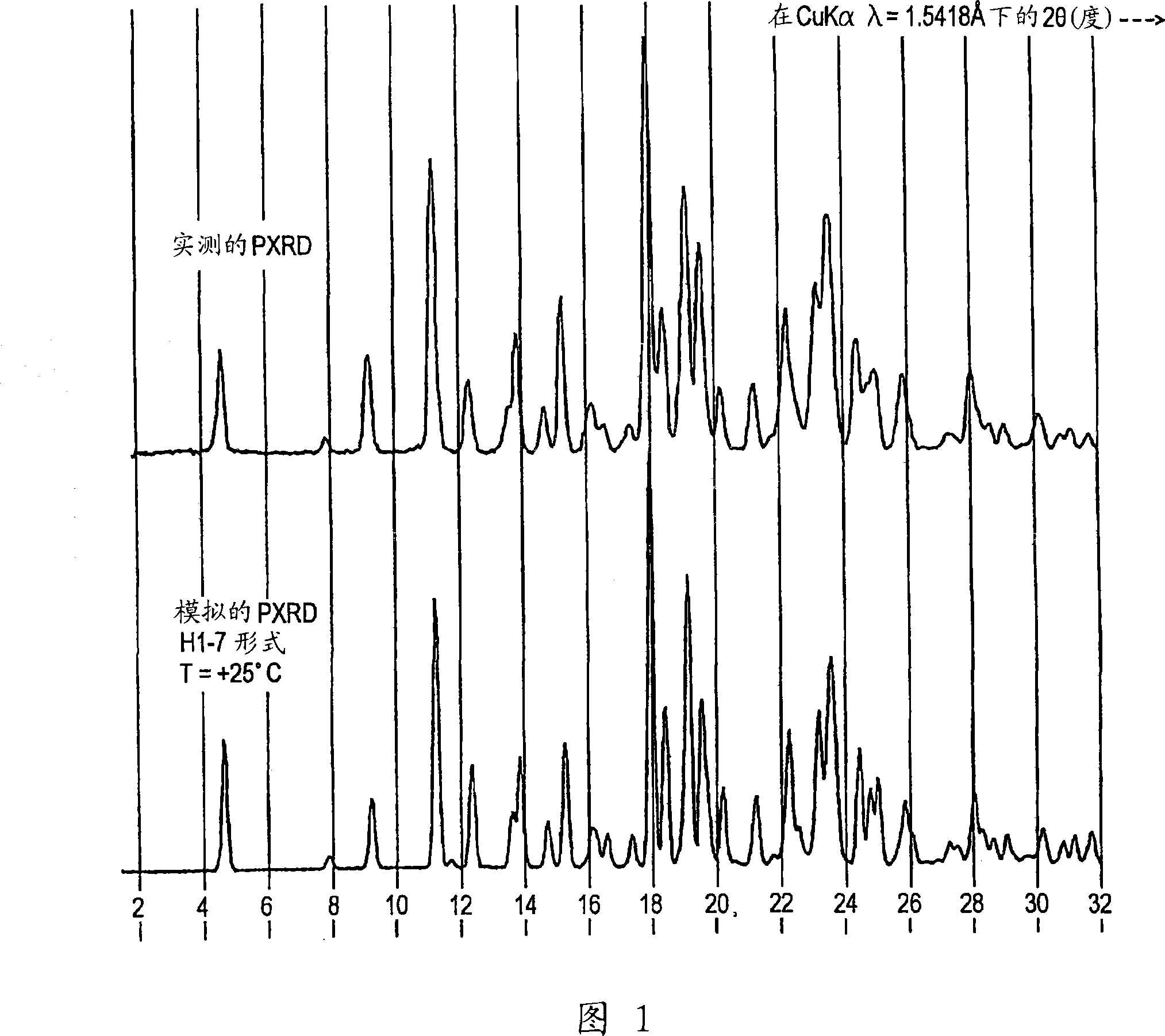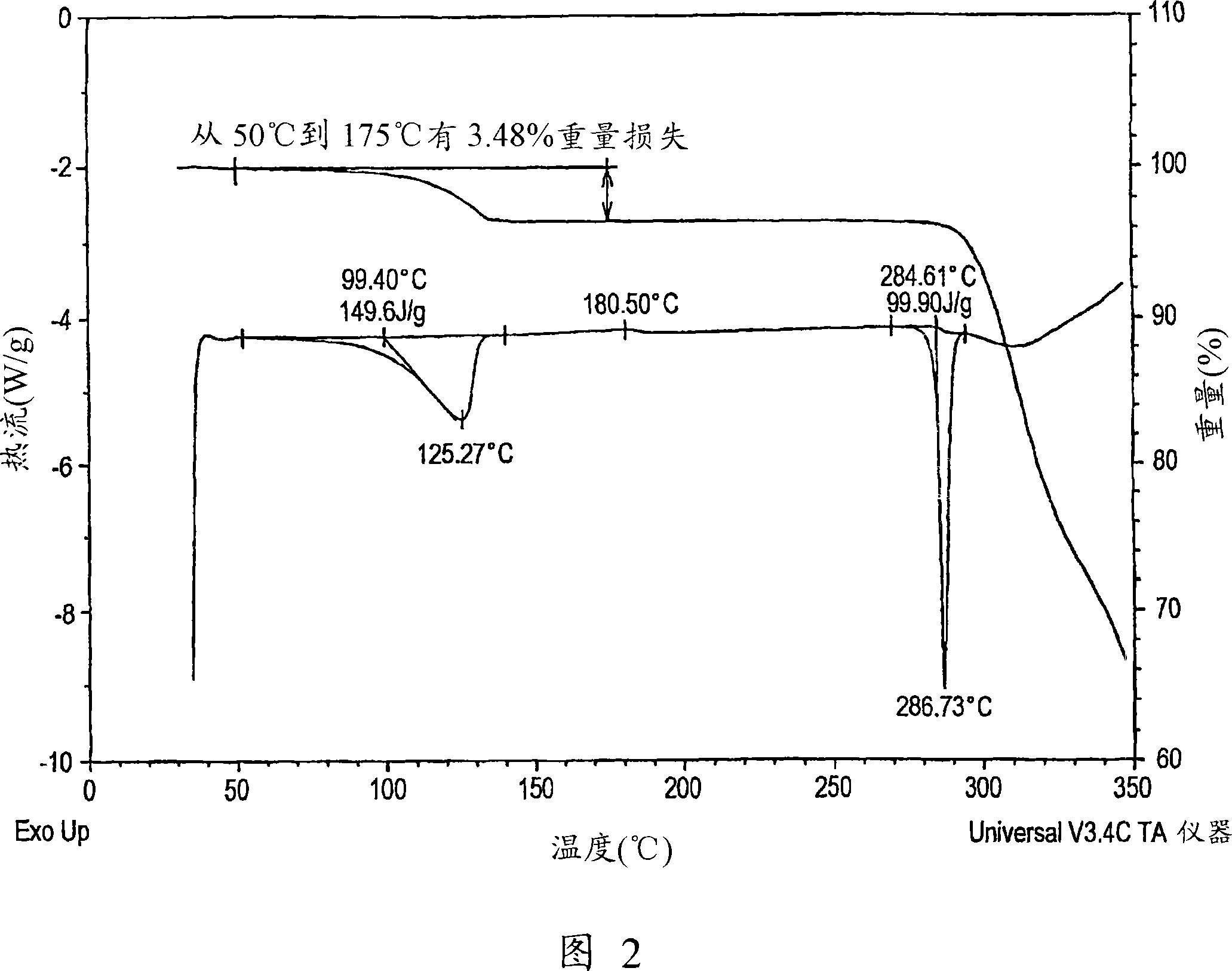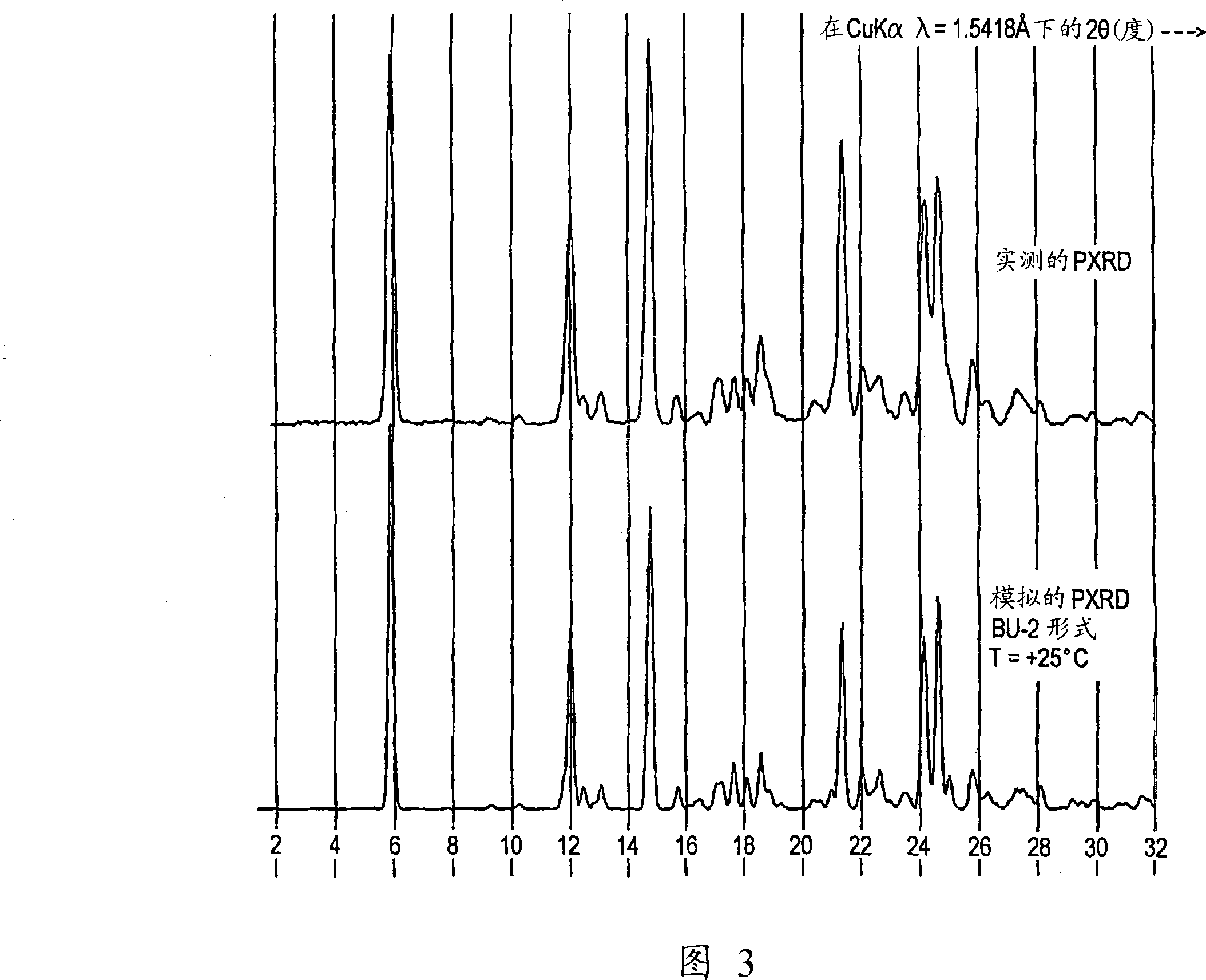Process for preparing 2-aminothiazole-5-aromatic carboxamides as kinase inhibitors
An alkyl and aryl technology, applied in the field of 2-aminothiazole-5-aromatic carboxamide, can solve problems such as low yield and generation of by-products
- Summary
- Abstract
- Description
- Claims
- Application Information
AI Technical Summary
Problems solved by technology
Method used
Image
Examples
Embodiment 1
[0360] Preparation of intermediates:
[0361] (S)-1-sec-butylthiourea
[0362]
[0363] To a solution of S-sec-butyl-amine (7.31 g, 0.1 mol) in chloroform (80 mL) was slowly added benzoylisothiocyanate (13.44 mL, 0.1 mol) at 0°C. The mixture was warmed to 10°C and stirred for 10 minutes. Then, the solvent was removed under reduced pressure, and the residue was dissolved in MeOH (80 mL). An aqueous solution (10 mL) of NaOH (4 g, 0.1 mol) was added to this solution, and the mixture was stirred at 60° C. for another 2 hours. Then, MeOH was removed under reduced pressure and the residue was stirred in water (50 mL). The precipitate was collected by vacuum filtration and dried to give S-1-sec-butyl-thiourea (12.2 g, 92% yield). mp133-134°C; 1 H NMR (500MHz, DMSO-D 6 )δ7.40(s, 1H), 7.20(br s, 1H), 6.76(s, 1H), 4.04(s, 1H), 1.41(m, 2H), 1.03(d, J=6.1Hz, 3H) , 0.81(d, J=7.7Hz, 3H); 13 CNMR (125 MHz, DMSO-D 6 )δ182.5, 50.8, 28.8, 19.9, 10.3; LRMS m / z133.2 (M+H); elemental a...
Embodiment 2
[0365] Preparation of intermediates:
[0366] (R)-1-sec-butylthiourea
[0367]
[0368] (R)-1-sec-butylthiourea was prepared according to the general method listed in Example 1, and the yield was 92%. mp133-134°C; 1 H NMR (500MHz, DMSO) δ0.80 (m, 3H, J = 7.7), 1.02 (d, 3H, J = 6.1), 1.41 (m, 2H), (3.40, 4.04) (s, 1H), 6.76 (s, 1H), 7.20 (s, br, 1H), 7.39 (d, 1H, J=7.2); 13C NMR (500MHz, DMSO) δ: 10.00, 19.56, 28.50, 50.20, 182.00; m / z 133.23 (M+H); elemental analysis C 5 h 12 N 2 Calculated for S: C, 45.41; H, 9.14.; N, 21.18; S, 24.25. Found: C, 45.32;
Embodiment 3
[0370] preparation:
[0371]
[0372] 3A.
[0373]
[0374] To a solution of 3-amino-N-methyl-4-methylbenzamide hydrochloride (1.0 g, 5 mmol) in acetone (10 mL) was added pyridine (1.2 mL, 15 mmol) dropwise via syringe at 0°C. ). 3-Methoxyacryloyl chloride (0.72 mL, 6.5 mmol) was added and the reaction was stirred at room temperature for 1 hour. The solution was cooled again to 0 °C, then 1 N HCl (1.5 mL) was added dropwise via pipette. The reaction mixture was stirred for 5 minutes, then water (8.5 mL) was added via addition funnel. Acetone was removed in vacuo and the resulting solution was stirred for 4 hours. Crystallization started within 15 minutes. After stirring for 4 hours, the vessel was cooled in an ice bath for 30 minutes, filtered, and rinsed with ice-cold water (2 x 3 mL) to afford compound 3A (0.99 g, 78% yield) as a white solid. 1 H NMR (400MHz, CDCl 3 )δ8.95(s, 1H), 8.12(br s, 1H), 7.76(s, 1H), 7.29(m, 2H), 7.05(d, J=7.9Hz, 1H), 5.47(d, J= 12.3Hz...
PUM
| Property | Measurement | Unit |
|---|---|---|
| density | aaaaa | aaaaa |
| density | aaaaa | aaaaa |
| density | aaaaa | aaaaa |
Abstract
Description
Claims
Application Information
 Login to View More
Login to View More - R&D
- Intellectual Property
- Life Sciences
- Materials
- Tech Scout
- Unparalleled Data Quality
- Higher Quality Content
- 60% Fewer Hallucinations
Browse by: Latest US Patents, China's latest patents, Technical Efficacy Thesaurus, Application Domain, Technology Topic, Popular Technical Reports.
© 2025 PatSnap. All rights reserved.Legal|Privacy policy|Modern Slavery Act Transparency Statement|Sitemap|About US| Contact US: help@patsnap.com



